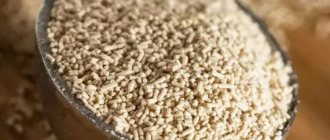In this article we will tell you:
- Vitamin and mineral composition of celery, nutritional and energy value
- What are the benefits of celery?
- Celery in dietetics
- Celery in folk medicine
- Varieties of celery. Which is healthier: root, stem, leaves?
- Celery consumption rate
- Harm and contraindications to eating celery
- How to properly cook and eat celery
- Recipes with celery
Most people consider dishes with green juicy celery stalks to be a healthy diet. But celery is not only a dietary product, but only a small part of what can be said about this useful plant. Moreover, it is useful for both men and women. This is one of the few plants whose roots, stems, leaves, and even seeds can be eaten.
In this article we will analyze the benefits of celery, how to cook it properly and eat it deliciously.
Vitamin and mineral composition of celery, nutritional and energy value
Celery
- an ideal dietary food product with low calorie content: only 42 kcal per 100 g for the root and 13-16 kcal for the leaves and stems. Low in fat and carbohydrates, it is an excellent source of fiber and provides low-calorie fiber.
Energy value of celery
:
- proteins - 0.9 g;
- fats - 0.1 g;
- carbohydrates - 2.1 g.
Due to its low calorie content, the plant is recommended for those who want to lose weight.
:
- raw vegetable contains 13 kcal per 100 g;
- fried or boiled - 25-26 kcal;
- steamed - 9-10 kcal;
- celery root - 32 kcal.
Celery is one of the natural antioxidants. It is a source of useful microelements, vitamins and minerals. Among them
:
- iron - 1.3 mg;
- calcium - 72 mg;
- magnesium - 50 mg;
- potassium - 430 mg;
- fiber - 1.8 g;
- phosphorus - 77 mg;
- sodium - 200 mg.
Vitamin composition of vegetables
:
- B1 (0.02 mg), B2 (0.1 mg), B6 (0.08 mg), B9 (21 mcg) normalize the functioning of the nervous system.
- C (38 mg) strengthens the immune system.
- PP (0.5 mg) supports the functioning of the heart and blood vessels.
- E (0.5 mg) and A (750 mcg) improve the condition of the skin, nails and hair.
The leaves of the plant contain the most carotene and vitamin E, so they are a real boon for women who care about their vision, nails, skin and hair.
Celery also contains various acids and antioxidants.
In addition to apigenin and luteolin, celery contains other plant compounds that have powerful antioxidant properties.
These include
:
- selinene;
- limonene;
- kaemferol;
- p-coumaric acid.
Antioxidants help neutralize free radicals and prevent them from causing damage that could otherwise lead to disease.
- organic acids;
- oxalic acid;
- flavonoids;
- furanocoumarins.
What internal contents can celery boast of?
Celery can boast of all its main beneficial qualities solely due to its internal or chemical composition. What does this plant consist of in more detail:
- Vitamins: A, B, C, E, K;
- Acids: ethaudioic, organic;
- Chemical elements: iron; calcium; magnesium; phosphorus;
- Other elements: sugars, salt, protein, essential oil;
Now let’s take a closer look at the specific benefits of this interesting vegetable.
What are the benefits of celery?
Celery has a wide range of beneficial effects on the body.
It contains a plant compound called apigenin, which plays a role in traditional Chinese medicine as an anti-inflammatory, antibacterial, antiviral and antioxidant agent.
It may also have properties that help fight cancer. According to the authors of the 2021 review, laboratory tests have shown that apigenin may promote apoptosis, a type of programmed cell death, which could make it useful as a cancer treatment.
Study
: Apigenin in cancer therapy: anti-cancer effects and mechanisms of action
In 2015, the researchers behind a mouse study concluded that diets rich in apigenin and apigenin reduce the expression of certain inflammatory proteins. Thus, these substances can reduce inflammation and restore the balance of the immune system.
Celery contains a flavonoid called luteolin. The authors of a paper published in 2009 suggested that luteolin may have anti-cancer properties—it could help prevent cancer cells from spreading and causing cell death. They suggested that luteolin may make cancer cells more susceptible to attack by chemicals in treatment.
We recommend
“The benefits of chicken liver: consumption rates, recipes” Read more
Effect of Celery on Bone Health
Celery is an abundant source of vitamin K, with one cup of raw celery providing you with 64 micrograms (mcg) of this nutrient.
A 2021 review of five studies that included a total of 80,982 participants looked at the link between vitamin K and bone fractures. Participants with higher dietary intakes of vitamin K had a lower risk of fractures.
Specifically, the authors noted that the risk of fracture was 22% lower among those who consumed more vitamin K than among those who consumed less.
Study
: Vitamin K intake and the risk of fractures
Effect of celery on diabetes
Millions of people around the world have type 2 diabetes, a condition that impairs the body's ability to control blood glucose levels. Eating a healthy diet can reduce your risk of developing type 2 diabetes.
In a 2012 study using data from 16,154 people, researchers examined the association between consumption of fruits and vegetables, including root vegetables, and the risk of developing type 2 diabetes.
They found that people who ate more root vegetables had a 13% lower risk of diabetes than those who ate fewer of them.
Study
: Fruit and vegetable intake and type 2 diabetes: EPIC-InterAct prospective study and meta-analysis
However, a more recent study conducted in 2019 examined the vegetable intake of 424 children and adolescents. The study authors found that eating root vegetables did not affect the likelihood of developing metabolic syndrome.
Study
: Prospective study of total and various types of vegetables and the risk of metabolic syndrome among children and adolescents
More research is needed to confirm the protective benefits of root vegetables such as celery against diabetes.
Effects of Celery on Heart Health
In one 2015 study of 2,884 adults, researchers examined the link between ascorbic acid levels in the blood and a person's risk of high blood pressure.
They found that participants with higher levels of ascorbic acid in their blood had a lower risk of developing high blood pressure.
Study
: Plasma Ascorbic Acid, A Priori Diet Quality Score, and Incident Hypertension: A Prospective Cohort Study,
Consuming foods high in vitamin C, such as celery, can help a person reduce the risk of high blood pressure by increasing ascorbic acid levels. Recall that high blood pressure is a leading cause of stroke and cardiovascular disease.
The effect of celery on the treatment of gastrointestinal diseases
Celery is actively used when it is necessary to stabilize the condition of diseases of the gastrointestinal tract: it normalizes digestion, stimulates the production of gastric juice, improves appetite and removes toxic substances.
It is rich in fiber, which improves intestinal microflora and removes waste and toxins from the body. Due to this, it has a mild laxative effect
Since it has an anti-inflammatory effect, it is used to relieve pain and exacerbations during ulcers and gastritis. This property is also useful in treating inflammation in other body systems, for example, cystitis, problems with the kidneys, gall bladder and liver.
This quality is especially characteristic of celery seeds. Their extract is used as an antispasmodic and analgesic. Due to the fact that celery reduces joint pain, it is recommended for people with arthritis, arthrosis and rheumatism.
The effect of celery on immunity
The alkaline environment of the body is the key to strong immunity, because as studies show, bacteria, viruses and parasites do not survive in an alkaline environment.
Like all vegetables, celery has an alkalizing effect on the body. This applies to raw vegetables, so for the alkalizing effect it is better to eat celery raw.
Celery is also rich in ascorbic acid, which helps improve immunity.
Many women love celery, as it is low in calories and gives a feeling of fullness due to the large amount of fiber. For the same reason, celery is included in weight loss diets.
But this is not the only beneficial property of the product for the female body. Thus, celery contains apiol.
The effect of celery on the female body
This substance acts as estrogen, a female hormone. Therefore, consuming celery in a woman’s diet helps fight painful and irregular periods, as well as unpleasant premenstrual symptoms.
Celery also improves the condition of a woman before menopause, since the plant contains phosphorus and vitamin K. These two elements are useful for women during this period, as they strengthen bones. Eating celery will help prevent the development of osteoporosis.
Another property highly valued among women is that celery will help maintain youth. It is rich in antioxidants that fight aging and have anti-inflammatory effects. Celery also has a beneficial effect on hair, nails and skin.
The effect of celery on the male body
Celery contains androsterone, a plant analogue of male sex hormones, which ensures stable erectile function and increases libido.
Thus, the main benefits of celery for men
:
- Due to the high content of androsterone in the stem and rhizome, the production of the male hormone testosterone is activated, which ensures full sexual function;
- Vegetable crops contain substances that are similar in structure to pheromones. They act as aphrodisiacs, enhancing sexuality and attracting the opposite sex;
- The antibacterial and antiseptic effects of celery are used to combat infectious lesions of internal organs, help cope with prostatitis and other genitourinary diseases;
- Thanks to its diuretic effect, the product removes harmful substances, toxins and radionuclides, has an antioxidant effect and serves as a prevention of cancer;
- The components of the plant activate blood flow, ensuring optimal blood supply to the genitals and stable erection.
The effect of celery on the children's body
Children's doctors recommend introducing a child to celery no earlier than one and a half years of age.
First of all, you need to check the body's reaction to celery, whether a small piece will cause an allergic reaction. Therefore, celery should be introduced into complementary foods gradually, mixing a small amount with other usual foods.
We recommend
“Intestinal motility: nutritional rules for improvement, menu for the week” Read more
What are the benefits of celery for a growing body?
- The calcium in the composition will strengthen the baby's bones and teeth.
- Potassium has a beneficial effect on the cardiovascular system of a growing organism.
- Sodium will make up for the lack of salt.
- Phosphorus will help develop the child's mental abilities.
The healing properties of celery
Celery, thanks to its own healing properties, is capable of:
- Prevent the development of pus in the intestines;
- Relieve pain and calm the inflammatory process when suffering from ulcers, gastritis or cystitis;
- Stabilize the gastrointestinal tract and restore appetite;
- Strengthen the immune system;
- Calm your nerves;
- Eliminate pain in joints;
- Eliminate all “problems” in the cardiovascular system.
From celery, as well as from many other plants, you can prepare a large number of useful decoctions and tinctures. We invite you to look through a few medicinal recipes that you can prepare at home that we are sure may be useful to you.
To make celery tincture, you must use only fresh roots or seeds of this vegetable. It is important to prepare the tincture itself in glass or enamel-coated containers. It is highly undesirable to use metal, since upon contact with it, celery can completely lose all its vitamins.
Tincture for rheumatism
Components:
- Celery roots - 1 tablespoon;
- Hot water – 2 glasses.
Cut the roots into small pieces, pour into a thermos or glass/enamel bowl, fill with hot water. Then seal and let sit for four hours.
The tincture should be drunk two tablespoons three times a day half an hour before meals. It will also help if the patient suffers from gout.
Decoction for gastritis or ulcers
To make this celery decoction, it is important not to forget about this essential rule - do not boil the drink itself. If during manufacturing the temperature exceeds ninety degrees, then everything useful will be destroyed.
Components:
- Celery roots - 1 tablespoon;
- Water – 2 glasses.
Chop the roots of this vegetable, fill them with water and send them to a water bath. You just need to simmer these roots under the lid for about five minutes. Then turn off the gas and cover the celery with a towel. The vegetable should be infused for eight hours.
You need to drink the same as the previous one - a couple of tablespoons three times a day, shortly before meals. The decoction will help relieve inflammation and relieve pain.
Celery in dietetics
Dishes with celery are perfectly digestible and stimulate metabolism, as it can get rid of excess cholesterol, lower blood sugar, remove excess fluid, it helps get rid of congestion, remove swelling, normalize blood pressure, and stabilize hemoglobin.
Celery is commonly promoted as a negative calorie food because it has high water and fiber content.
According to the Academy of Nutrition and Dietetics, the human body burns about 10% of its daily calories through thermogenesis, which involves chewing and digesting food and storing its nutrients.
In theory, negative calorie foods are foods for which more energy is expended in their digestion and assimilation than is consumed, resulting in an energy deficiency. Typically, negative calorie foods are those that are high in water and fiber and low in fat.
However, a 2021 study, which has not yet been peer-reviewed, concluded that celery is not a negative calorie food.
Lizards that ate celery used 33% of the food's calories for digestion, while 43% of the calories were lost through feces and urine. The lizards absorbed about 24% of their calories from the celery they ate.
Study
: Negative calorie foods: An empirical examination of what is fact or fiction | bioRxiv
Celery juice
The first thing we will note is the diuretic properties of celery juice. As you know, extra pounds are not only an excess of fat in the body, but also water.
Celery juice has a delicate diuretic effect and removes all harmful substances from the body along with urine. It also improves tone and helps normalize the functioning of the endocrine glands. By the way, celery juice can be safely used for rheumatism and arthritis.
This juice will help balance weight and reduce cravings for sweet and fatty foods. In addition, it helps to get rid of excess weight, cellulite and swelling, as it has a cleansing and diuretic effect.
Freshly squeezed juice will help calm the nervous system and maintain body temperature balance during extreme heat.
Celery juice will help prevent constipation and reduce the risk of calcification in the body. It will improve digestion and cleanse the intestines of harmful accumulated substances.
The juice will also help those who have sand in their kidneys and will facilitate its painless elimination. But if you already have stones, then it is better to refuse such medicine!
I would like to add that celery juice has an antiseptic and antimicrobial effect and reduces pain. This is why it is widely used to treat cuts, wounds and burns. The juice of the plant is also used to relieve irritation and redness from the eyes. By the way, many people rub celery juice on their eyes to get a healthy and clear look.
Recipe for making celery juice:
- 2-4 stalks of celery (or 50-100 grams of root)
- 1/2 small beet
- 2 carrots
- 1/2 green apple
- Optionally, lemon
Drink the juice in small sips. Use 1-2 times a day 30-60 minutes before meals.
If you don't have a juicer, how to make juice?
If you don't have a juicer, grate all the ingredients, wrap everything in cheesecloth or any other linen cloth, and simply squeeze everything in your hands, twisting it. All the juice can be squeezed out of the vegetables quite easily.
Celery in folk medicine
Celery belongs to the umbelliferous family, along with carrots, parsley and dill. Celery is descended from wild celery, native to the Mediterranean region, where its seeds were once highly valued as a medicine. As is the case with many other folk remedies, modern research confirms the medicinal value of this widespread vegetable crop.
In modern folk medicine, celery is used as a strong diuretic for urinary tract diseases. It is also prescribed as an appetite enhancer.
The juice of the fresh roots of the plant is used for kidney diseases, gout, rheumatism, neurasthenia, urticaria, and skin inflammation.
Targeted nutrition tips
that will increase your energy level by 10 out of 10
From TOP nutritionists of the MIIN
Get tips
Celery fruits are brewed as tea and drunk for shortness of breath, hiccups, and as an antiemetic. It is considered a good remedy for senile constipation.
The fruits of the plant are used for asthma, diabetes, and obesity.
In Bulgarian folk medicine, celery root is used as an analgesic, diuretic, and appetite stimulant for kidney diseases, prostatitis, and impotence. The juice of the plant is prescribed 1 teaspoon 2-3 times a day.
In Ayurveda medicine, celery seeds are classified as special Ayurvedic remedies. They are believed to have diaphoretic, expectorant, and diuretic properties. The seeds are prescribed for colds, bronchitis, weak digestion, and swelling. For sinusitis, 1-3 grams are prescribed. seed powder, three times a day.
In folk medicine of other countries, celery fruits, its herbs and roots are used in the treatment of urolithiasis, neuroses, and insomnia. An ointment of its roots with butter is used in the treatment of wounds as an anti-inflammatory agent.
Celery essential oil has a detrimental effect on pathogenic fungi Candida albicans, Candida tropicalis, Candida krusei, Candida guilliermondii, Candida parapsilosis, Cryptococcus neoformans, Trichophyton rubrum, Trichophyton mentagrophytes, T. Mentagrophytes var. interdigitale, Trichophyton verrucosum, Microsporum canis, Microsporum gypseum, Epidermophyton floccosum, Aspergillus niger, Aspergillus fumigatus and flavus Aspergillus.
Due to its estrogenic properties, celery extracts are effective in the treatment of primary dysmenorrhea.
Celery herb extracts, thanks to apigenin, have a vasodilatory, hypotensive effect.
The mucus from the roots of the plant has an enveloping effect. Celery flavonoids strengthen the walls of blood vessels, and therefore it is prescribed for various diseases of the capillaries.
Alcohol extracts of celery seeds have a pronounced anti-Helicobacter effect. A study by Iranian doctors showed that taking a mixture consisting of Apium graveolens and Trachyspermum copticom is more effective than the drug omeprazole in the treatment of functional dyspepsia.
Celery herb extracts have anti-inflammatory, anti-arthritic effects.
Celery grass and seeds have a pronounced hypoglycemic effect.
Experimental studies have shown that taking celery seed extract reduces total cholesterol, triglycerides, low-density lipoproteins and increases high-density lipoproteins.
Positive results have been obtained in the treatment of rheumatism and prostatitis with celery. Research has shown that celery extracts prevent the development of cognitive decline associated with depression with age.
We recommend
“Blood thinning products: diet, menu” Read more
3-N-butylphthalide, isolated from celery seeds, has a pronounced neuroprotective effect, prevents damage to nerve cells during ischemia and exposure to chemical agents.
Experimental studies showed that celery seed L-3-n-butylphthalide restored synaptic connectivity (a cause of cognitive impairment) impaired in a model of Alzheimer's disease. Celery Dl-3nbutylphthalide prevents the development of cognitive impairment in chronic conditions of hypoxia/hypercapnia in patients with chronic obstructive pulmonary diseases.
Experimental studies on animals have shown that taking aqueous extracts of celery leaves increases the rate of spermatogenesis and sperm quality.
Study
: Effective remedy - celery
How to use for weight loss
The vegetable is suitable for those who want to lose weight. The reasons are as follows:
- The plant is rich in vitamins, microelements, antioxidants, electrolytes, etc.
- Has a negative calorie index.
By consuming celery, a person gets everything he needs and at the same time uses up his fat reserves.
The 7-day weight loss diet is popular. A week before it, avoid the following foods:
- of bread;
- sausages;
- sweets;
- smoked, fatty and fried;
- alcohol.
Then, for 7 days, drink vegetable juice in the morning and eat 3 servings of soup from it. Each day has its own additional product. For example, on the first day they eat any fruit in unlimited quantities, except bananas.
Varieties of celery. Which is healthier: root, stem, leaves?
Celery has an unusual taste and unlike other vegetables - bitter-sweet, spicy and strong aroma.
Root celery is primarily grown to produce a fleshy, round root vegetable that is shaped like a large apple.
But its leafy part is also suitable for eating. The aroma of the white pulp of the root vegetable is slightly reminiscent of parsley. The root part of the plant, in addition to its vitamin composition and essential oil, contains enzymes that prevent the development of cancer cells.
Both the roots and leaves of this vegetable contain a large amount of valuable amino acids, such as
:
- Valin.
- Isoleucine (controls hemoglobin levels, supports the heart and sufficient blood sugar).
- Tryptophan (restores normal levels of the hormone of joy).
- Aspartic acid (necessary for the functioning of the neuroendocrine system).
- Rubidium (163% DV). This little-known element acts as an antihistamine and fights allergens, relieves inflammation and nervous tension.
You can eat the root vegetable either raw or prepare various culinary delights with its addition: salads, first and meat courses, as well as delicious and healthy cutlets, the basis of which will be celery.
The petiole variety is also called salad. The variety differs from others in its thicker and fleshier stems, the thickness of which reaches 4 cm, as well as the absence of root crops.
For eating the leaves of the plant, a variety called leafy is suitable. Visually, the leaves of this variety resemble parsley leaves, but the celery greens are much more lush, and the aroma is more refined and spicy.
The leafy part can be used salted, fresh, or dried. Spicy greens will add a special tart flavor and exquisite aroma to all kinds of vegetable dishes.
Modern research on celery has shown that all parts, especially the roots, have a diuretic effect.
Study
: Role of Zinc Homeostasis in the Pathogenesis of Diabetes and Obesity
All parts of the plant have pronounced antioxidant properties. Celery seeds have antihypertensive properties.
Study
: Antiulcerogenic and antibacterial activities of Apium graveolens essential oil and extract, Antihypertensive effect of celery seed on rat blood pressure in chronic administration
The uniqueness of celery is that all parts of this vegetable are suitable for food - leaves, roots and stems. By including it in your diet, you can not only benefit your body, but also lose a few extra pounds. The main thing is to observe moderation in consumption and follow the recommendations of specialists. So how much celery can you eat per day to get the most benefits?
What benefits does celery give to women?
It is widely known that most women, who closely monitor the thinness of their figure, often count the calories they consume. It is worth noting that celery dishes are simply an ideal solution for any diet. One hundred grams of this vegetable contains only thirteen calories! But is this the only thing that celery can benefit women?
All the most useful qualities and possible restrictions on the consumption of the root of this interesting plant are stored specifically in its “insides”. It contains a whole list of all sorts of useful things that can improve the external condition of the body. For example, nails, hair or skin.
Celery completely normalizes hormones, reduces the risk of sudden mood swings during premenstrual syndrome, and also helps in relieving pain during the main period of menstruation.
In the root itself there is an apiol. It increases the frequency of discharge during menstruation, so it is better not to eat celery root if menstruation is already heavy. For the same reason, the vegetable should not be eaten towards the end of the gestation period; by chance, labor did not begin prematurely.
It is recommended to exclude celery from the diet of pregnant women. Moreover, consumption of stalked celery should be avoided. If a danger of miscarriage is identified, then leafy varieties must also be removed from the diet. The substances contained in the plant increase the tone of the uterus, as a result of which you may encounter extremely undesirable consequences.
Harm and contraindications to eating celery
Despite the numerous beneficial properties of this plant, there are a number of contraindications for its use that must be observed so as not to harm yourself.
Contraindications include
:
- some diseases of the pancreas and liver;
- children up to 12 months (further in agreement with the pediatrician);
- endocrine disorders;
- gastritis and peptic ulcer of the stomach, duodenum in the acute phase;
- intestinal disorder of any etiology;
- the presence of blood clots in the body;
- pregnancy and lactation (with caution and in consultation with your doctor);
- individual intolerance to the product;
- food allergy in the decompensation phase.
- People with any type of diabetes should consider the amount of carbohydrates in this product and use this information when calculating insulin doses (for those with IDDM).
- If you have any chronic diseases that require adherence to special nutritional principles, you should consult with a specialist about the permissibility of consumption and recommended volumes of the product.
Restrictions for celery consumption
Celery is a vegetable that in any case should not be abused if you have health problems. For example, if you have kidney stones, eating celery can trigger movement.
If gastric juice has a high level of acidity, then this plant can only be consumed as a seasoning. Dried. Fresh and juicy, can increase the acidity even further.
The main diseases that prohibit eating celery:
- phlebeurysm;
- bleeding in the uterus;
- exacerbation of a stomach or intestinal ulcer.
- pancreatitis;
- problems with the thyroid gland (advice from an Endocrinologist);
- thrombophlebitis;
- cholecystitis.
Allergy to celery
There is a large group of foods (led by peanuts) that cause acute allergic reactions, including celery. For people prone to allergies, exposure to celery can potentially lead to fatal anaphylactic shock.
The allergen does not appear to be completely destroyed even at high cooking temperatures. It is known that celery root, when eaten, contains more allergens than leaves or stems.
Celery seeds have the highest levels of allergens. Endocrine anaphylaxis can be aggravated to the limit. An allergic reaction can even occur from contact with tools or processing machines that have processed celery, making it difficult to use such products.
To a greater extent, allergic reactions to celery are observed in the European part of the continent, in contrast to peanut allergies, which are most common in the United States. Products on the shelves of European stores are labeled indicating the content of celery, even in small quantities. Clear designations for the consumer are established by law.
If you suffer from any of these or any other internal diseases, it is better to consult your doctor before eating celery.
How to properly cook and eat celery
Celery can be consumed not only in its natural form, but also included in soup, salads and other vegetable dishes, and in any of its manifestations.
How to eat celery root?
Immediately before eating, the root part is washed well under running water at room temperature. At the same time, using the edge of a well-sharpened knife, remove the skin from the root.
When cutting a vegetable, sprinkle it with a small amount of fresh lemon juice from time to time. This procedure will help avoid darkening of the product.
We recommend
“Proper diet: menu planning and ready-made recipes” Read more
Fresh lemon juice can be replaced with water with a little salt added.
For those who want to lose weight, nutritionists advise eating root vegetables once a day, prepared as follows: the washed and peeled root is grated on the finest grater. Use the product boiled or stewed: the finer it is crushed, the more aromatic the prepared dish will be.
In order to preserve the maximum amount of vitamins during cooking, celery must be immersed exclusively in boiling water and, when cooking, be sure to tightly cover the container with a lid.
How to eat celery stalks?
The stems can be eaten either raw or stewed, for example with meat products or other favorite vegetables. In addition, they can be fermented.
Juicy and soft stems fit perfectly as an additional ingredient into almost any salad. To taste they will go well with seafood, apples and any
Raw vegetables are quite difficult for the body to digest; the gastrointestinal tract simply does not have the necessary enzymes to digest the coarse fiber of vegetables.
Therefore, for greater effect, it is better to chop celery as much as possible and add it to salads, and it is most optimal to make juice from it, then absorption will be much better.
Starting your morning with a glass of celery juice is a great habit for supporting your immune system.
What are the benefits of celery juice?
Celery juice contains all the same elements that are in celery itself. Only the beneficial substances in the form of juice are absorbed much better.
Celery contains enough water that it is easy to turn the vegetable into juice without adding any additional liquids.
Let us highlight the main beneficial qualities of this drink
:
- has a slight sedative effect on the nervous system;
- tones and gives strength;
- has a mild laxative and diuretic effect;
- has a positive effect on the condition of blood vessels;
- has antimicrobial and antibacterial effect;
- promotes tissue regeneration;
- promotes gentle removal of waste and toxins from the body;
- has a beneficial effect on the functioning of the hematopoietic system;
- increases hemoglobin in the blood;
- helps in the fight against extra pounds;
- strengthens the reproductive system of men and women;
- increases the elasticity of joint tissues;
- has an anti-inflammatory effect;
- has a beneficial effect on brain processes;
- saturates with strength and vigor;
- provides pronounced immune protection.
The drink is recommended for athletes, people engaged in active physical labor, and anyone who spends a lot of energy during the day. During active working periods, this drink protects against fatigue, provides energy, and has a preventive effect, protecting against seasonal infections.
We recommend
“Psyllium is a valuable supplement for health and weight loss: features, useful tips and recipes” Read more
It is important to understand that in some cases, drinking celery juice can lead to such consequences
:
- increased gas formation and bloating;
- bowel disorder (diarrhea, constipation);
- manifestations of an allergic nature (urticaria, peeling);
- inflammation of the mucous membranes of the gastrointestinal tract;
- nausea, vomiting.
Of course, all these troubles are rare and arise from unlimited use of the product or due to ignoring contraindications.
How can you benefit from drinking celery juice?
There are a number of simple rules for using celery juice
:
- Everything is good in moderation!
It is not recommended to drink more than 100–150 milliliters of drink per day for an adult.
- Drink only fresh!
Celery and any other freshly squeezed juices should be consumed immediately after preparation. All beneficial properties are quickly lost, and the drink oxidizes during long-term storage.
- You can and should combine!
Not everyone likes the taste and aroma of natural celery juice. Therefore, the composition can be decorated with additives. You can combine celery juice with mint, spinach, lime and lemon juice. And also add the pulp of your favorite vegetables and fruits to the drink.
- Just try it carefully!
There is no need to start immediately with 100–150 grams. Let's start with 20 milliliters of volume. After drinking juice for the first time, you should carefully observe the body’s reaction, and only if the response is positive, you can continue the experiment and increase the volume of the product you drink.
- It is recommended to drink celery juice in the morning.
This drink invigorates and energizes, so drinking it before bed is not recommended. At the very least, you should try to drink this healing drink in the morning or 4-5 hours before the evening.
How to make celery juice?
To obtain a tasty, smooth drink, it is best to use an auger or other juicer. But if you don’t have these tools in your kitchen, you can replace them with other available tools.
- Grater and gauze
The celery pulp can be grated and squeezed thoroughly through a gauze cloth folded in 3 layers.
- Blender and sieve
The celery pulp can be broken up with a blender and passed through a fine sieve. You can also squeeze the juice through cheesecloth. Important to remember! There is no need to add water or other liquids to natural celery juice. This is a “self-sufficient” product that is full of moisture.
We recommend
“Healthy food: delicious and healthy recipes for every day, the basics of proper nutrition” Read more
But you can also make vegetable or fruit mixes. Celery goes well with the following foods
:
- pear;
- mint;
- spinach;
- green apple;
- carrot;
- ginger root;
- cucumber.
Adding salt and sugar to fresh celery is strictly not recommended.
Mechanism of action
Celery helps speed up metabolism and burn fat. It takes more energy to digest it than it contains. And the high content of fiber, which is not digested but simply fills the stomach, ensures long-term satiety. Individual parts of the plant have different effects on the body. It is recommended to eat everything - roots, leaves, stems and juice of celery.
Juice
The juice nourishes and cleanses the body and produces a tonic effect. Drinks made from celery juice and other healthy ingredients can replace desserts and satisfy the need for sweets. The juice is a strong diuretic. It removes excess fluid and salts from the body.
Leaves
The leaves contain a high concentration of vitamin C. They should be used to stimulate metabolism, maintain tone, and maintain nutritional balance during diets. It stimulates intestinal motility, removes toxins, and normalizes kidney function.
Root
The root is the most useful part of celery. It has a beneficial effect on the gastrointestinal tract, accelerates metabolism, restores water balance, and provides the body with vitamins.
Stem
The stems promote fat burning. In addition, they have a beneficial effect on libido, which indirectly helps to get rid of extra pounds.
Recipes with celery
Celery, cucumber and mint juice recipe
Ingredients
:
- medium celery stalk;
- cucumber - 1 pc.;
- mint - 1 sprig.
Preparation
:
Cut the celery into cubes and place in a blender bowl. Peel the cucumber and cut into cubes, add to the celery. Grind the vegetables into a homogeneous mass and squeeze out the juice through cheesecloth.
Serve the drink garnished with a sprig of mint and 3-4 ice cubes.
French pumpkin casserole with celery
Ingredients
:
- Celery – 3 stalks.
- Pumpkin –800 gr.
- Bell pepper – 250 gr.
- Carrots – 150 gr.
- Onions –80 gr.
- Low-fat cheese – 200 gr.
- Sour cream (not more than 10%) –50 gr.
- Soy sauce – 60 ml (3 tablespoons).
We recommend
“Therapeutic diets: principles of construction and examples of tables” Read more
Preparation
:
- Rinse the carrots under running water and remove the peel.
- Cut the peeled carrots into strips, cubes or grate on a coarse grater.
- Wash the celery and cut into medium-sized rings.
- Peel the pumpkin and cut into small cubes.
- Wash the bell pepper, remove the stem, core and seeds. Cut into slices Sliced carrots and celery, simmer over low heat in a minimum volume of water for 10 minutes. Vegetables must be mixed.
- Then add pepper and pumpkin.
- Season with sour cream and soy sauce.
- Place the resulting mixture in a baking dish and sprinkle with grated cheese.
- Place in the oven preheated at 180 degrees for 30 minutes.
Classic American appetizer celery dip
Ingredients
:
- Celery
For the sauce - dip:
- 150 ml sour cream or Greek yogurt.
- 1 clove of garlic, finely chopped or pressed.
- 1 tbsp. lemon juice or balsamic vinegar).
- Salt.
- Black pepper.
- 100 grams of low-fat cheese (grate).
- 1 tbsp. chopped fresh parsley.
- The cheese can be replaced with half an onion (finely chopped).
Quinoa and celery salad
Ingredients
:
- 1 cup quinoa;
- 3 small stalks of celery;
- 3 oranges;
- 1 tbsp olive oil;
- 1/3 cup walnuts;
- 1/4 cup pomegranate seeds;
- salt and pepper to taste.
Instructions
:
- Boil the quinoa. Chop celery, 2 oranges, chop nuts.
- Mix the juice of 1 orange and olive oil in a separate bowl.
- Add rice, oranges and celery to a large bowl. Pour over the above-prepared sauce, add salt and pepper. Sprinkle with pomegranate and nuts.
We recommend
“Vitamins for veins and blood vessels: nutritional rules for maintaining health” Read more
Apple and celery soup
Ingredients
:
- 1 large peeled and chopped celery root;
- 1 medium onion;
- 2 tablespoons oil;
- 1 large peeled and chopped apple;
- 4 glasses of water;
- 1 vegetable bouillon cube;
- salt and pepper to taste;
- chopped nutmeg.
Instructions
:
- Heat oil in a large saucepan.
- Add onion and salt and cook until golden brown.
- Add water and vegetable stock cube.
- Add the apple and wait until it boils.
- After boiling, lower the temperature.
- Cover and cook until the celery is tender (about 15 minutes).
- When the celery softens, puree the soup (you can use a blender).
- Add chopped nutmeg.
Salmon baked with celery and tomatoes
Ingredients
:
- 1 salmon fillet with skin.
- 5 cherry tomatoes.
- 2 small celery sticks.
- 1/6 white onion.
- 2 tbsp. l. capers.
- 1/2 tsp. lime juice (can be replaced with lemon).
- 1 tbsp. l. pickled ginger.
- Olive oil.
- Salt and black pepper to taste.
We recommend
“Correct carbohydrates for women: list of products, daily intake for weight loss” Read more
Cooking method
:
Preheat the oven to 205° C. Wash the fish and treat with salt and pepper.
Cut the vegetables: celery and onion into strips, tomatoes into two parts. Grease the foil with olive oil and place it in a glass dish where the fish will be baked.
Mix vegetables with capers and ginger. Place the fish in foil and add lime juice (can be replaced with lemon). Place the vegetable mixture on top of the fish. Cover the foil on both sides. Place in the oven for 20 minutes. Ready!
Mackerel salad with celery and onion
Ingredients
:
- 3/4 cup cooked Atlantic mackerel.
- 1/4 cup finely chopped celery.
- 1/8 cup finely chopped red onion.
- 1/8 cup finely chopped parsley.
- 1/2 tbsp. l. ground flax seeds.
- 3 tbsp. l. olive oil.
- Juice of half a lemon.
- Sea salt and pepper to taste.
Cooking method
:
In a small bowl, use a fork to shred the mackerel into pieces. Add celery, onion and parsley and stir. In a separate bowl, mix olive oil with flax seeds. Without ceasing to stir, combine the fish and sauce and mix thoroughly.
Serve on lettuce leaves, drizzled with olive oil. Sprinkle with lemon juice, salt and pepper to taste.
Ready! Bon appetit!
A stable presence of celery in the diet is an excellent way to prevent atherosclerosis, diabetes, cardiovascular diseases and impaired water-salt metabolism. But before introducing celery into your regular diet, make sure that you do not have any of the contraindications discussed in the article.
How to cook at home
Celery stalks are recommended to be consumed fresh. This makes it possible to preserve the entire nutritional composition of the product. In addition, the petioles can be steamed, but not more than 2 minutes. Heat treatment by cooking, stewing or frying leads to the destruction of almost all useful elements. It is not recommended to store fresh chopped stems. It should be consumed within 30 minutes, otherwise it will lose its healing properties.
What do they eat them with?
The petioles are most often used to prepare vegetable salads and smoothies. They are also used to make sticks, which are suitable for snacking or adding to cocktails or ice cream.
There are many delicious recipes for making celery. It goes well with the following products:
- cabbage;
- potatoes;
- chicken;
- carrots;
- dried fruits;
- tomatoes;
- sweet pepper.
Along with onions and carrots, celery is considered a staple in French cuisine. This combination of ingredients is the basis of many soups, sauces and stews.
Vitamin smoothie
Vegetable and fruit drinks have a wonderful taste and the ability to combine ingredients according to personal preferences. Celery smoothie helps enrich the body with vitamins, activate metabolic processes and strengthen immune abilities.
What to do:
- Squeeze the juice from the stalks of celery, orange, grapefruit and ginger.
- Combine the ingredients and mix thoroughly.
- Add apple juice. It is recommended to take a natural drink without added sugar.
It is better to drink the cocktail in the morning immediately after preparation. It will fill you with energy and vitality for the whole day.
Try also a detox smoothie with celery for weight loss
Celery and apple detox salad
In US restaurants, this appetizer has a specific name - Waldorf salad. This is a light dietary dish that was first served in 1893. The salad is dressed with citronel sauce, which is a variation of mayonnaise, and sometimes it is replaced with sour cream.
Step by step recipe:
- Soak raisins with warm water.
- Wash the stems. Cut them into small pieces.
- Peel the apple. Cut into cubes.
- Sprinkle apple and celery with lemon juice.
- Chop the walnuts with a knife.
- Mix all ingredients. Season with sour cream.
When serving, it is recommended to decorate the dish with lettuce leaves.
California is considered the largest producer of petiole celery. This is where the best harvests of juicy and crispy stems are concentrated. Michigan, where a celery museum has been established, is in fourth place in the race for the harvest.
Growing and care
Root and petiole celery have a long growth period, so the seedling method is suitable for growing them. Seed material quickly loses its viability and takes a long time to germinate. This means that pre-sowing treatment is indispensable.
The seeds are soaked in warm water for a day, then wrapped in gauze or thin cotton damp cloth and wait for the seedlings to sprout. In a warm environment they appear within a week. Next, the seeds are placed in the refrigerator for 14 days.
Early leaf celery is sown directly into the ground; late varieties have a growing season of 80-100 days, so they are grown through seedlings.
Basic rules for successful cultivation of celery:
- Celery root greens are not cut. Otherwise, not a rounded root crop will be formed, but a “washcloth” of roots.
- High hilling of the root variety is not practiced, so as not to provoke the growth of lateral roots.
- After the root crop appears above the surface, the soil is raked and the root shoots are cleaned to create a rounded shape.
- Celery plantings are watered as the soil dries, without overwatering. Excess moisture provokes the development of putrefactive processes in the root system.
- Root crops are harvested after the tops dry.
- For growing petiole celery, soil with neutral pH=6.8-7 or slightly acidic pH=5.6-6.0 is suitable.
- Stem celery seedlings are planted in areas on the south side of the garden.
- Plantings of petiole celery are regularly thinned. Side shoots are cut off.
- Two weeks before harvest, the stems are wrapped in paper for the purpose of bleaching. This celery has a delicate taste without bitterness.
- Plants are fertilized with potassium and nitrogen fertilizers.
- Sowing of leaf celery seeds is carried out after the soil has been warmed to +10°C.
Varieties
The best varieties of root celery: Albin, Globus, Delikates, Egor, Esaul, Zvindra, Kaskade, Gribovsky, Maxim, Non Plus Ultra, Snow Globe, Yudinka, Yablochny.
Popular varieties of leaf celery: Kartuli, Bodrost, Zakhar, Nezhny, Samurai.
Self-bleaching petiole varieties: Tango, Malachite, Zolotoy, Triumph, Pascal.
Petiole varieties that need bleaching: Male Valor, Crunch, Utah, Atlant.
Controversial components of celery
Some consider them useful, but there are also scientifically proven facts of their adverse effects on the body:
- A large number of essential oils. They have a stimulating effect on the body and increase the tension of the immune system. Meanwhile, by causing excessive gas formation, essential oils can provoke an exacerbation of enterocolitis and colitis and other diseases of the digestive system.
- The essential component helps to increase blood pressure, which is good for hypotensive patients (see how to increase blood pressure) and unacceptable for hypertensive patients (see medications for lowering blood pressure).
- Celery in a dose of more than 80 grams per day promotes the movement and destruction of stones in urolithiasis. This can be a plus for patients with small stones (up to 0.5 cm in diameter) and sand, since they are able to leave the body on their own. With large stones, it is impossible to get them out on their own - they get stuck in the urinary tract, cause an attack of renal colic and often end in surgical intervention.











